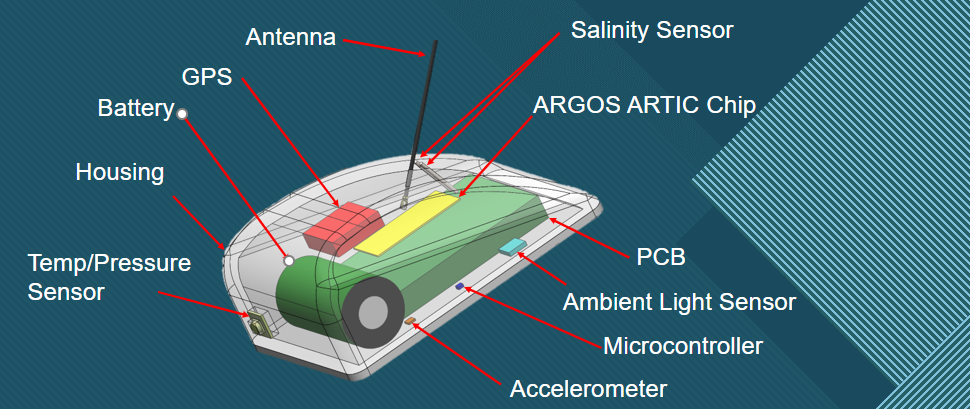
On Tuesday, February 22, Team MATR delivered their second Qualitative Review Board (QRB2) for the semester. Thanks to the UF faculty members and IPPD coaches that participated and were able to give us meaningful feedback that the team can take in to consideration for the final weeks of their prototype development. Prior to the QRB2 presentation, the Mechanical Engineering team was able to complete a waterproof with the first iteration of the device enclosure. The test was conducted by placing the fully sealed enclosure at the bottom of a pool, at a depth of about 8 feet for about 11 hours in total. There were no electronics inside for this first test and only a mock antenna was used to test the method for sealing the enclosure around the external components (external components include antennas, temperature/pressure, and salinity sensors). The results of the test show that the design will need some reinforcement for the waterproofing, as a few milliliters of water were able to seep in over the 11 hours. The mechanical team has already discussed possible solutions and are moving on to the next iteration of testing. The electrical and computer teams are continuing work on the system integration. At this point each of the sensors has been individually tested with the microcontroller and functionality has been confirmed. Next step is to get all sensors connected to the microcontroller at once, and a main program is being written to collect data from all sensors at specified timer intervals. A PCB for the full system has been ordered to facilitate testing the entire system, but the team is anticipating a second and possibly third revision of the PCB before the prototype is complete, to ensure an optimal design. Some questions remain about the GPS module that will be included in the tracker, mainly surrounding the antenna. The current antenna for the GPS module does not fit the design well enough, and the options are to find a compatible antenna that does, or possibly decide on a completely different module that has an ideal antenna for the design. The team will be communicating with UF faculty and turtle researches about possible solutions and coming to a conclusion on the best option in the next week.